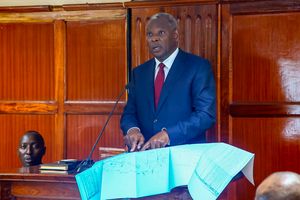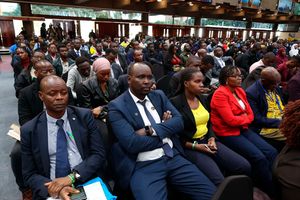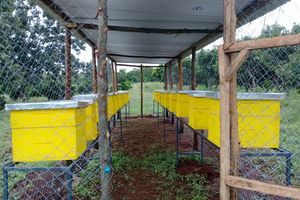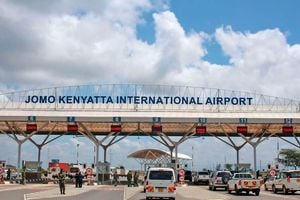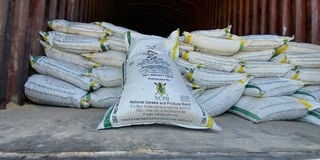
Some of the 560 bags of substandard fertiliser that were seized at the National Cereals and Produce Board depot in Molo, Nakuru County on March 23, 2024.
We have been taken through a gripping lesson on how the subsidised fertiliser programme has been captured by rent-seeking elites and the politically well-connected. I refer to the sensational claims made last week by an official of the troubled Kel Chemicals Company during closed-door hearings of the National Assembly’s Agriculture Committee.
Yes, the evidence of elite capture of the subsidy programme may be anecdotal at this stage. But the tell-tale signs of a procurement regime riddled with corruption and malfeasance are in plain sight.
First, there’s a phenomenal increase in the number of briefcase-type entities that have entered the business of fertiliser imports. I have seen documents from a recent tender by the National Cereals and Produce Board (NCPB) which reveal that, of the six successful bidders contracted to supply subsidised fertiliser under the so-called consignment basis, only one company is a big importer with a track record.
Another telling sign of the times we live in is the emergence into the space of Dubai-based commodity importers which are invariably owned by shell companies, thus making the ultimate beneficial ownership difficult to track and trace.
When large public procurement contracts are dogged by a preponderance of cases, where the awarded companies are unable to access letters of credit from banks and, therefore, not able to perform, it is a tell-tale sign of a procurement process riddled with collusion and bid rigging.
Subsidised fertiliser
Procuring subsidised fertiliser efficiently and transparently should be a very simple thing. But due to corruption, we have deliberately made it a very complex affair. Yet fertiliser is a standard common-user product sold in open markets and international commodity exchanges, where prices are publicly quoted on multiple screens.
If we wanted to be transparent and reduce corruption risks around the subsidy programme, we should be debating whether or not to directly negotiate with large well-capitalised importers with a track record in the business by using internationally quoted prices as benchmarks and as the basis for negotiating prices.
In Tanzania, the fertiliser subsidy programme is run by the Tanzania Fertiliser Regulatory Authority with the mandate to regulate manufacturing, importation, marketing and use of fertiliser. The Tanzanians also have a universal fertiliser subsidy programme, a fertiliser transport subsidy and a voucher system.
Ultimate responsibility
Here, we are unable to make up our mind on where the ultimate responsibility for regulating, importation and marketing should sit. In this way, we fudge responsibility and make it difficult for one entity to be made accountable for the programme.
Last year, the government suddenly shifted the management of imports to the corruption-ridden Kenya National Trading Corporation (KNTC). We were told the decision had to be made as NCPB was deeply indebted to banks and, therefore, unable to open letters of credit to suppliers. The experiment with KNTC failed miserably.
In retrospect, the mistake we made from the onset with the subsidy programme was to allow the bureaucracy at the Ministry of Agriculture headquarters and the commodity marketing monopoly NCPB to take charge of procurement of subsidised fertiliser. Tenders are always bogged down by controversies and allegations of corruption while the number of disputes that end up at the Procurement Appeals Tribunal keep rising.
Political godfathers
I read somewhere how the government of Nigeria had been running a large state-controlled fertiliser subsidy programme since the 1970s. They reached a point where the subsidy was consuming 56 per cent of the federal government’s capital spending. Despite the considerable fiscal burden, the actual use of fertiliser by small-scale farmers had not changed substantially. The system was bedevilled by wide-scale corruption.
What did the Nigerians do? They de-politicised the programme by removing the state from procurement and distribution of subsidised fertiliser. As long as our subsidy programme is run by the Agriculture ministry and NCPB, it will remain in the capture of well-connected commodity traders and their political godfathers.
Kenya’s fertiliser private sector market is among the most developed. The private sector has well-capitalised importers and manufacturers that have developed well-established supply chains with global fertiliser producers and shipping companies.
The sector has access to financing and a range of fertiliser business models. The government must rethink the current model for implementing the fertiliser subsidy programme. Let us re-evaluate the whole programme, study its implications in terms of market distortions and competitiveness and rethink what must be done to curtail the meddling by the political elite.

